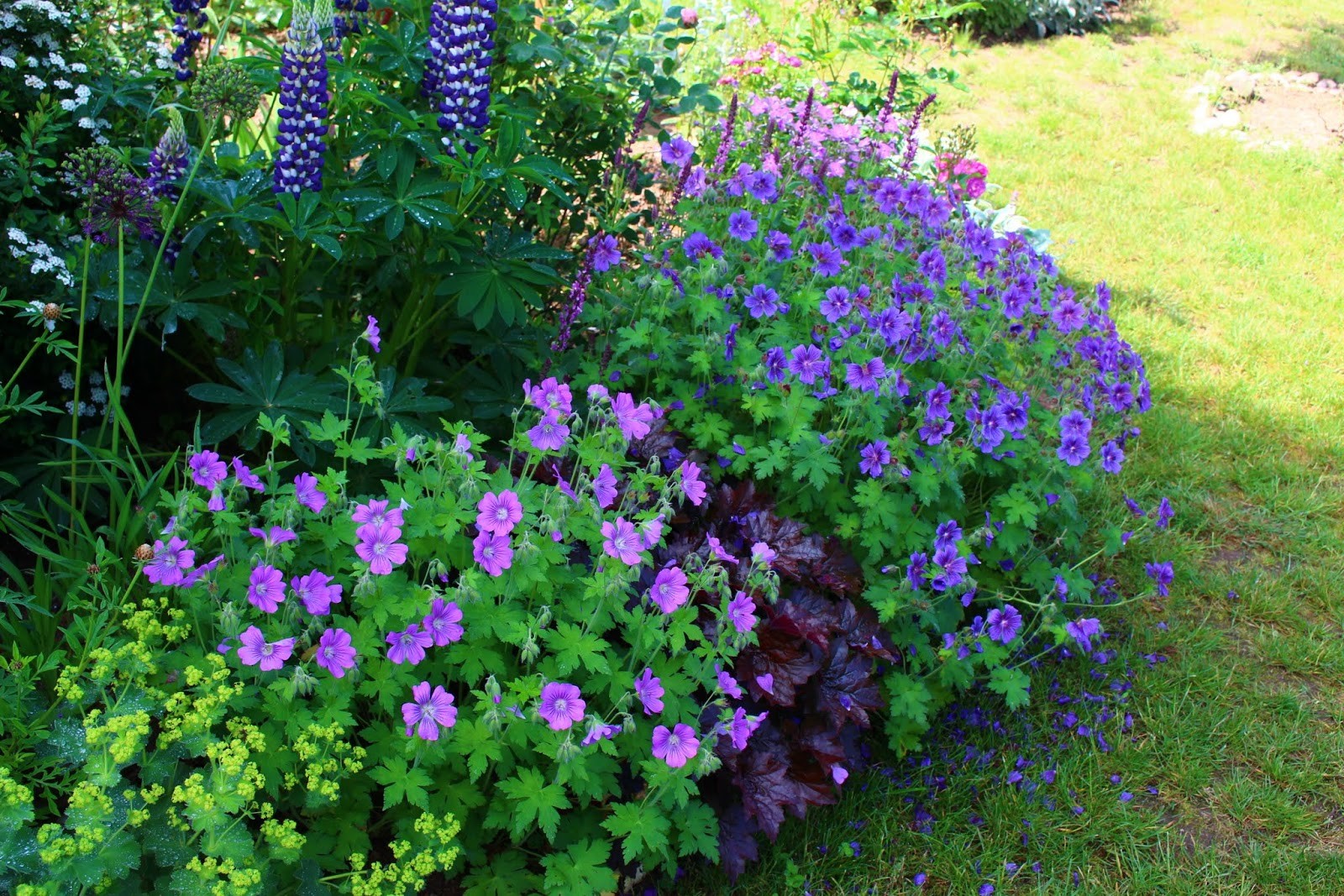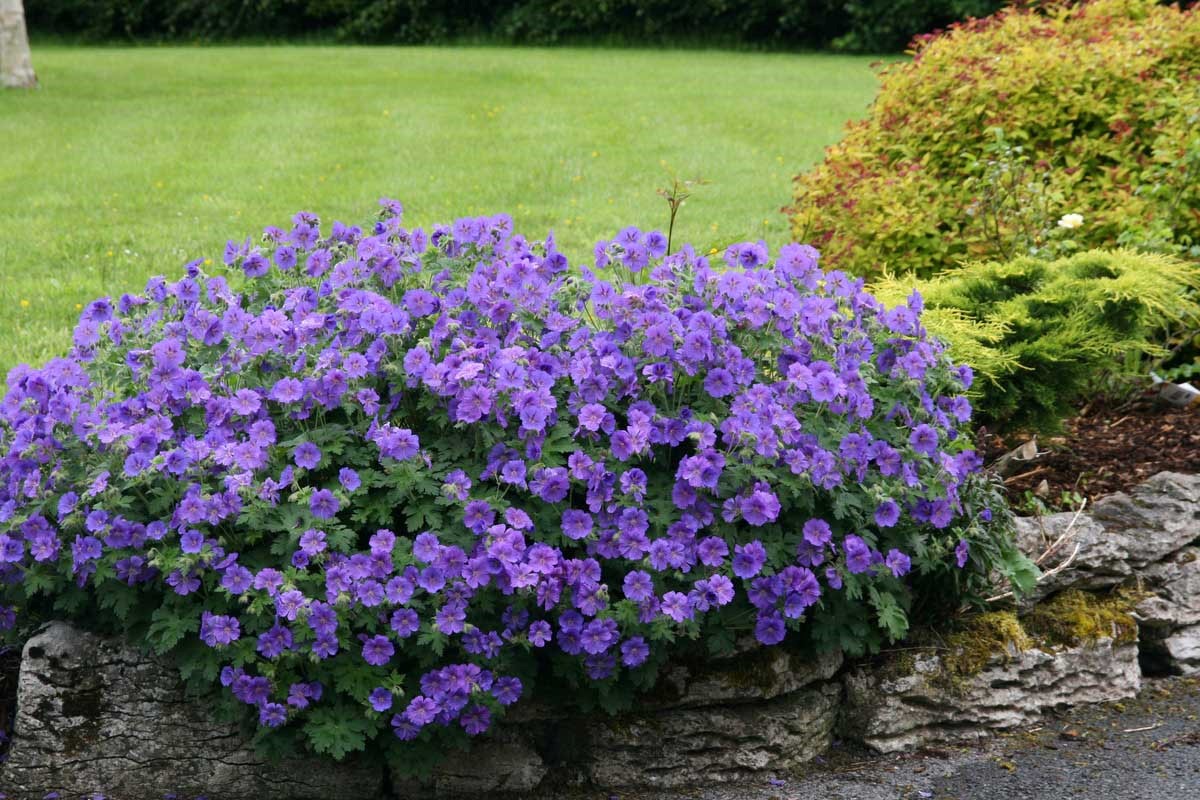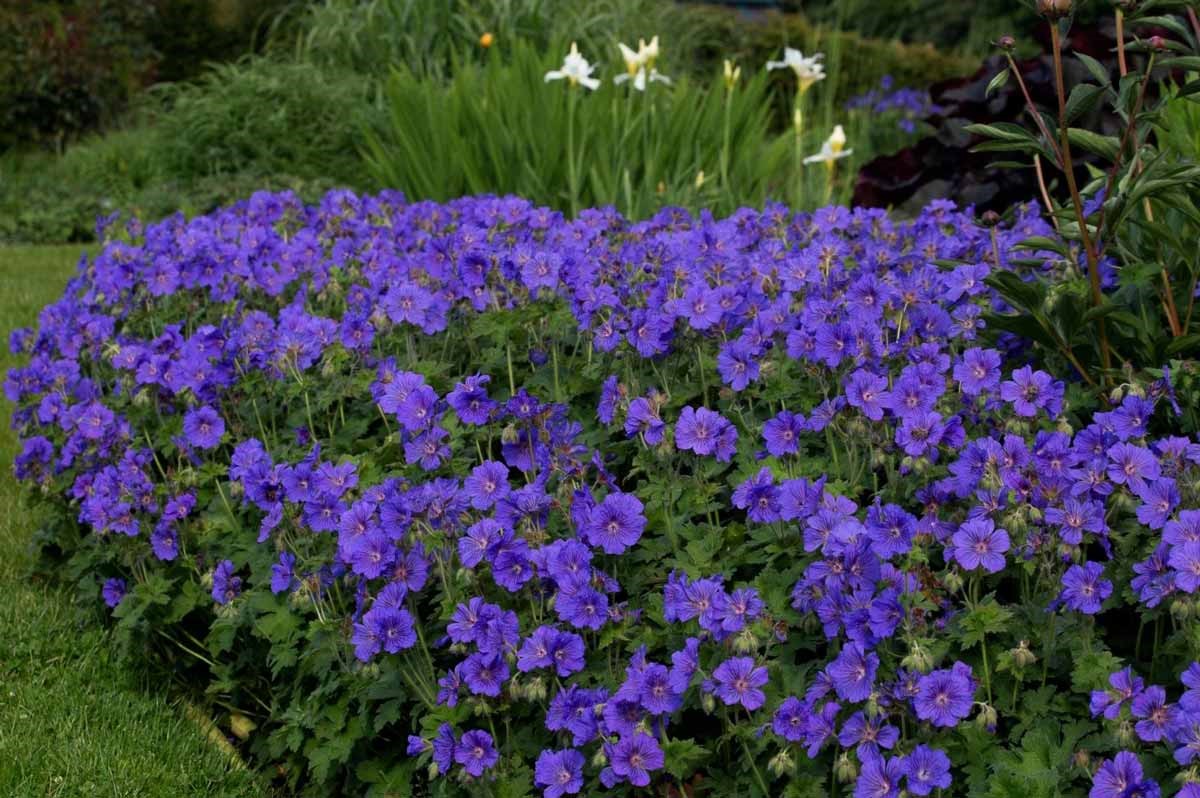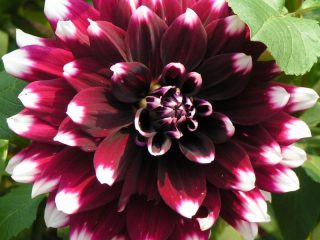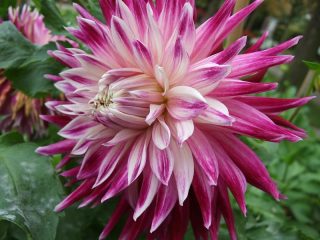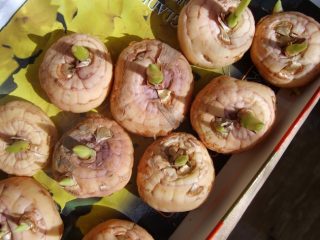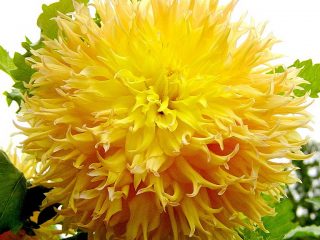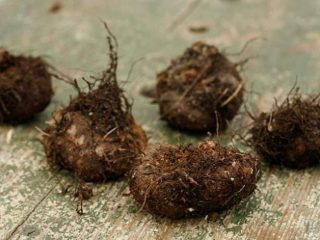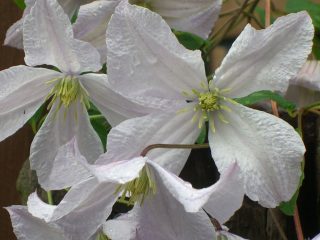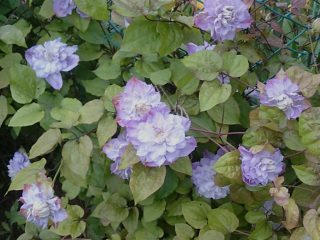Content
- 1 Description of meadow geranium
- 2 Varieties of meadow geranium
- 3 Medicinal properties of meadow geranium
- 4 Contraindications for meadow geranium
- 5 Applications of meadow geranium
- 6 Features of cultivation
- 7 Diseases and pests
- 8 Reproduction methods
- 9 Meadow geranium in landscape design
- 10 Conclusion
- 11 Reviews of meadow geranium
Meadow geranium is a species of herbaceous plant from the genus and family of the same name. Often found in Siberia, the Far East and other regions. Produces low-growing, lush bushes with a large number of flowers of lilac and violet hue. It contains quite a few valuable components and has medicinal properties.
Description of meadow geranium
Meadow geranium is a perennial plant of medium height. Erect stems reach from 20 to 80 cm. Pubescence is noticeable on the shoots. The stems are covered with glandular hairs. They can be either solitary or growing in small groups, branching slightly in the upper part.
The root system of meadow geranium is represented by a short and rather thick, massive rhizome, the length of which reaches 8-10 cm. The surface is covered with dead foliage of a dark brown color.
The basal foliage is located opposite and grows on long petioles.Forms a rosette with a diameter of 10 to 15 cm, the lobes have a pinnate-serrate shape. The stem leaves of meadow geranium are slightly smaller, their petioles are short, the upper ones are practically without them - they are sessile. The bracts are lance-shaped, pointed, and reach only 1-1.5 cm in length. The color is grass-green, uniform, and the surface is matte.
Meadow geranium flowers are quite large, open widely, and appear in large quantities. They are organized into umbrella-shaped inflorescences. Various colors, mostly lilac:
- blue-violet;
- lilac-red;
- lilac-blue.
Each meadow geranium flower consists of five petals, their shape is obovate, with dark veins visible on the surface. The pedicels are covered with hairs, droop, but during flowering they straighten and grow vertically.
Flowers appear from June to July, partly in early August. Fruiting begins from late summer to the second half of September. The fruit of meadow geranium resembles a small beak and reaches 3 cm in length. As it ripens, it is divided into several small formations. The seeds are spotted in color and very small.

The plant produces small, numerous flowers that look beautiful against the overall green background.
Sometimes it is also called meadow pelargonium, although this is not entirely correct. Geranium and pelargonium are similar plants from the same geranium family, but belong to different genera and do not interbreed with each other.
The difference between meadow geranium and forest geranium
Meadow and forest geraniums are very similar to each other, although they are different types of perennial plants of the same family.The differences between them are related to appearance, places of growth and other parameters described in the table.
Comparison parameter | Meadow geranium | Geranium forest |
Habitat | Mainly meadows | Mostly forests |
Flower coloring | Blue and bluish purple | Purple and violet |
Peduncles | Drooping | Erect |
Honey production* | More | Less |
*At the same time, both species are excellent honey plants (in general, wild varieties are much superior to cultivated plants in this indicator)
Where does meadow geranium grow?
Meadow geranium is a light-loving plant, although it can also tolerate shade. It is usually found in meadows near ponds, slopes, open forest clearings, and at the edge of the forest. Less commonly, it can be found in the forest and near bushes.
Often found in Siberia (both Western and Eastern) and the Far East. This is a completely common species for the Altai Nature Reserve. It can also be found in the middle zone, the Volga region, in the south of Russia up to the North Caucasus. In the east, the range reaches the western regions of China. Meadow geranium can also grow in the foothills at an altitude of up to 2300 meters above sea level.
Varieties of meadow geranium
There are several varieties of meadow geranium bred by breeders. Among them the most popular are:
- Summer Skies - plants with beautiful pink-purple flowers. The core is contrasting - yellow.
- Splish Splash (Splash) is a low variety (within 50 cm) with spreading bushes. The photo of the meadow geranium plant shows that it produces beautiful white flowers with streaks of blue. They are small in size (within 4 cm), but appear in large numbers.
- Black Beauty is another short variety.The stems reach 40-50 cm. The flowers are of a typical shape, 5-petaled, pale lavender in color.
- Silver Queen (Silver Queen) - tall plants, individual shoots reach 130 cm. The flowers are large, clearly visible, and have a purple tint.
- Double Jewel - this variety produces unusual double white flowers (their petals are arranged in several rows). There is a noticeable soft lilac shade at the base, which only adds to its attractiveness.
Medicinal properties of meadow geranium
Meadow geranium contains quite a lot of useful substances in its tissues, including flavonoids, carbohydrates, saponins, vitamins (C, K), tannins and mineral compounds. Thanks to this, the use of the herb provides a complex effect on the body:
- wound healing, disinfection;
- preventing itching;
- decrease in fever;
- anesthesia;
- relaxing, anti-inflammatory, astringent, sedative effect.
Meadow geranium is used as an additional remedy in the treatment of various pathologies, including cancer, rheumatism, heart disease, and gout. The herb helps in stopping bleeding, overcoming the effects of poisoning, diarrhea, and feverish conditions. At the same time, it is important not to abandon the main course of therapy prescribed by the doctor. Geranium is used only in consultation with a specialist.
Contraindications for meadow geranium
In some cases, the use of meadow geranium is contraindicated:
- intestinal obstruction, frequent problems with constipation;
- gastritis of various types, ulcerative formations;
- age up to 12 years inclusive;
- thromboembolism, thrombosis;
- intestinal atony (difficulty stool);
- cases of individual intolerance.
Applications of meadow geranium
The plant has medicinal properties and is used both internally and externally. For example, for diarrhea, kidney disease or bleeding, use an infusion prepared according to this recipe:
- Take a tablespoon of dried rhizomes and herbs.
- Pour 500 ml of cold water (boiled).
- Leave overnight, strain and take half a glass four times a day before meals (30 minutes before).
To eliminate pain from gout and rheumatism, a similar remedy is used. However, you need to take it one tablespoon up to five times a day. The course of treatment is one month.

The herbal infusion is taken internally and externally
Another recipe is used to treat angina:
- Measure out 5 tablespoons of dried herb.
- Pour boiling water (300 ml).
- Leave for 3-4 hours and filter.
- Consume 3-5 times a day (2 tablespoons).
The plant can be used as a sedative. To do this, pour a teaspoon of raw material into a glass of boiling water and leave for 15-20 minutes. Gradually drink the entire portion throughout the day. The course of treatment is up to three months.
Features of cultivation
It is better to plant meadow geranium in early May, when there is virtually no threat of return frosts. The plant grows well in sunny areas - this is necessary for beautiful and long-lasting flowering.
The holes can be formed at a short distance from each other, for example, 20 cm. Fertile soil is laid in them, for example, humus with peat, sand and turf soil in a ratio of 1: 1: 1: 2. After planting meadow geranium, the soil is compacted slightly and watered well using settled water.
Further care comes down to regular watering and periodic (once every 3-4 weeks) application of fertilizers. You can use both complex mineral supplements, for example, azofoska, and liquid organic matter (potassium humate, mullein infusion 1:10). You should also periodically loosen the soil and remove weeds.
If you give too much water, the soil will not have time to dry out, which can cause rotting and partial death of the rhizome.
Diseases and pests
Meadow geranium rarely suffers from diseases, but if you do not follow the rules of moderate watering and do not feed the plants, they can suffer from the following pathologies: root rot, botrutis (fungal infection), viral damage (incurable), swelling due to excess moisture (bubbles on leaves).
When plaque or foreign spots appear on the foliage of meadow geranium, it is important to immediately treat it with fungicides. For this you can use, for example, Bordeaux mixture, the preparations “Maxim”, “Fufanon”, “Tattu” and others.

If preventive treatments are carried out on time, plants will not suffer from diseases and pests.
Another danger to meadow geraniums is associated with insects. Often, aphids, whiteflies or spider mites can be found on leaves and petals (they are invisible in themselves, but are identified by the appearance of a thin cobweb). To combat them, Colorado, Fufanon, Decis, Karate and other insecticides are used.
Reproduction methods
Meadow geranium is mainly propagated by cuttings. You can start the procedure not only in spring, but also in autumn. Get several green cuttings 10-15 cm long, make oblique lower cuts and place them overnight in a solution of a growth stimulator, for example, Zircon.
Then the cuttings of meadow geranium are planted in a fertile, moist mixture, for example, sand and peat 1:1, covered with a jar and grown in greenhouse conditions. Periodically remove the cover and water it. After 1.5 months, the root system appears, and at the end of the season the seedlings can be moved to a permanent location.
There is also a method of propagation by seeds, but this is a more labor-intensive option. In addition, plants obtained from seedlings will bloom only after a few years. Therefore, in practice this method is used extremely rarely.
Meadow geranium in landscape design
Geranium goes well with many flowers of different heights. It looks beautiful on its own as it produces nice bushes with numerous flowers. Several options for using the plant in garden design are shown below:
- Composition with tall flowers.
- Landing next to the path.
- To frame the path.
- Single landing option.
Conclusion
Meadow geranium is a popular medicinal and ornamental plant. Adapts well to different conditions, blooms profusely and for a long time. Different varieties can be used not only for decoration, but also as medicine. It is recommended to consult a doctor first.
Reviews of meadow geranium





